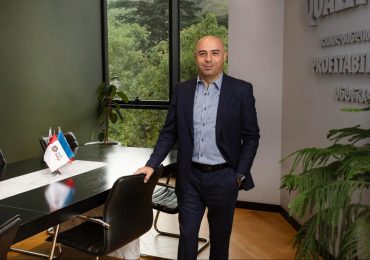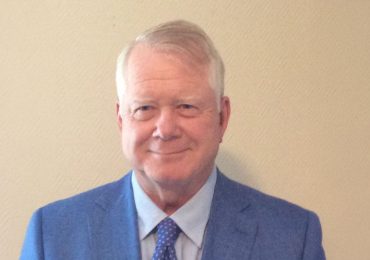Photo Courtesy of: Grant Nicholson
Grant Nicholson never intended to become a solar energy mogul. Fifteen years ago, he was nursing a career-ending cricket injury and wondering what came next. Today, his Yorkshire-based companies have generated £24 million in revenue by challenging how British businesses pay for power.
The transformation raises questions about an industry that has traditionally demanded enormous upfront investments from companies wanting to go green. Nicholson’s approach, installing commercial solar panels with no upfront cost, has attracted 175 clients, but critics wonder if the model is sustainable at scale.
The Numbers Game
Traditional solar installations require businesses to pay hundreds of thousands of pounds before seeing a penny of savings. Nicholson’s INICIO reverses this equation through Power Purchase Agreements, where his company pays installation costs and businesses buy the electricity generated at fixed rates.
The pitch is compelling: immediate savings of £0.10 per kilowatt-hour and contracts spanning up to 25 years. For large commercial operations, this translates to tens of thousands in annual reductions. But the model depends on Nicholson’s ability to secure ongoing capital—a challenge that has felled other renewable energy startups.
“Solar Energy typically requires significant capital expenditure up-front,” Nicholson states in company materials. “With INICIO, we pay up-front for the installation of solar panels, and the customer pays for the energy that they produce”.
Industry analysts point out that while this eliminates barriers for customers, it concentrates financial risk on companies like INICIO. The question becomes whether venture capital and debt financing can sustain this approach as the market matures.
Cricket Lessons in Energy
Nicholson’s path from sports to solar began with what he calls a “forced pivot.” When injury ended his professional cricket aspirations, he turned to business, first in traditional energy, then renewables.
The sporting background, he argues, provided discipline for the long game required in energy infrastructure. “Cricket taught me focus and patience. Business taught me resilience and risk. But energy? Energy is the game that I’m actually now playing,” he reflects.
This patience proved crucial during the early years when Nicholson bootstrapped his ventures rather than pursuing flashy fundraising rounds. The approach contrasts sharply with London-based renewable energy startups that raised millions before generating significant revenue.
Market Realities
While Nicholson’s model has attracted major clients, including CBRE and Yodel, questions remain about its scalability. The company now aims to deploy £100 million in debt financing directly into revenue-generating, long-term agreements that simultaneously help customers reduce costs while strengthening the company’s profit and loss statement through predictable cash flows.
The UK commercial solar market faces several headwinds. Government incentives have diminished since the early 2010s, and businesses increasingly scrutinize green investments for genuine returns rather than PR benefits. Energy price volatility, initially a driver for solar adoption, has stabilized somewhat from peak crisis levels.
Competitors include established players like Horizon Energy Ventures and newer entrants offering similar financing models. The market’s fragmentation suggests room for multiple approaches, but also indicates no single model has yet achieved dominance.
The Ownership Question
Nicholson’s strategy centers on asset ownership rather than service provision—his company retains ownership of solar installations while selling the power they generate. This creates recurring revenue streams but requires substantial ongoing capital commitments.
“When you own the energy infrastructure, you don’t just sell time or advice. You own a piece of the transition, and the cash flow that comes with it,” he explains.
The approach works if installations perform as projected and customers honor long-term contracts. However, technology degradation, maintenance costs, and potential customer defaults could impact returns. The model’s long-term viability will depend on how well these risks are managed.
Industry Skepticism
Not everyone in the renewable energy sector embraces zero-cost installation models. Traditional solar companies argue that customers who pay upfront have greater investment in system performance and maintenance. They question whether businesses will treat “free” installations with the same care as owned assets.
Energy consultants also raise concerns about contract complexity and potential disputes over performance guarantees. Long-term agreements create obligations for both parties that may prove challenging if energy markets shift dramatically or if either company faces financial difficulties.
The Transition Test
Nicholson’s success reflects broader changes in how businesses approach energy procurement. Companies increasingly seek predictable costs and sustainability credentials, creating demand for alternative financing models.
Whether his approach represents a lasting shift or a temporary market response remains unclear. The renewable energy sector has seen multiple waves of innovation, with some models proving durable while others collapsed when market conditions changed.
The £24 million revenue milestone represents roughly a quarter of the way toward Nicholson’s ambitious vision, achieved entirely through his own capital deployment to this point. As he pursues his £100 million deployment goal, investors will scrutinize whether the model can scale without sacrificing returns or service quality.
His transformation from cricket player to energy entrepreneur illustrates both the opportunities and uncertainties in Britain’s renewable transition. The success of companies like INICIO will largely determine whether alternative financing becomes standard practice or remains a niche approach in the evolving energy landscape.
For now, Nicholson continues adding installations across Yorkshire and beyond, betting that businesses will choose certainty over ownership when it comes to their power supply. Whether that bet pays off at scale remains the industry’s £100 million question.
















